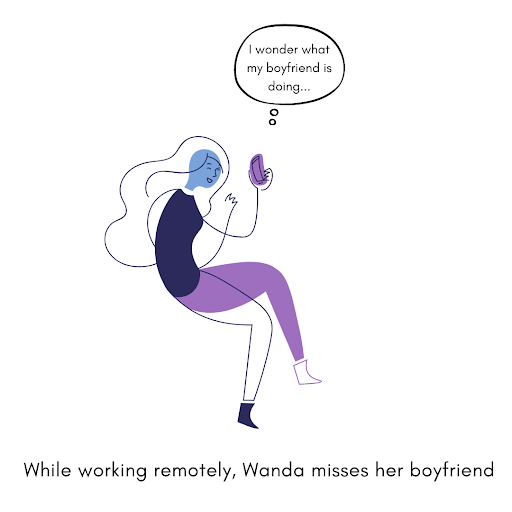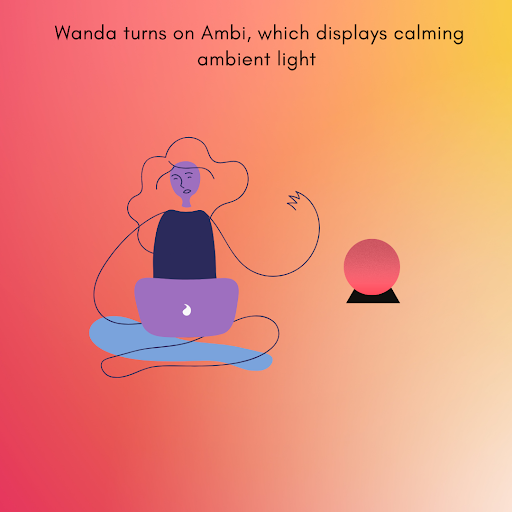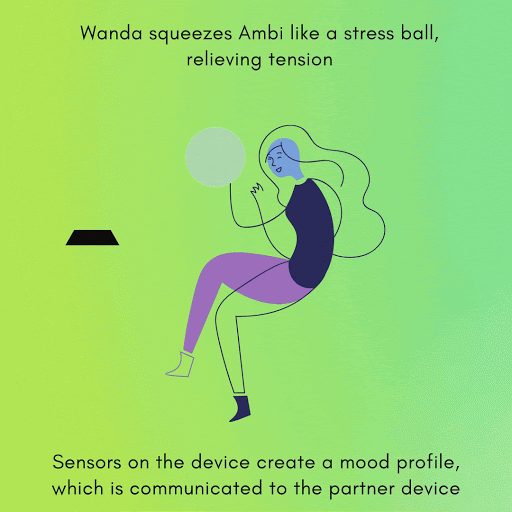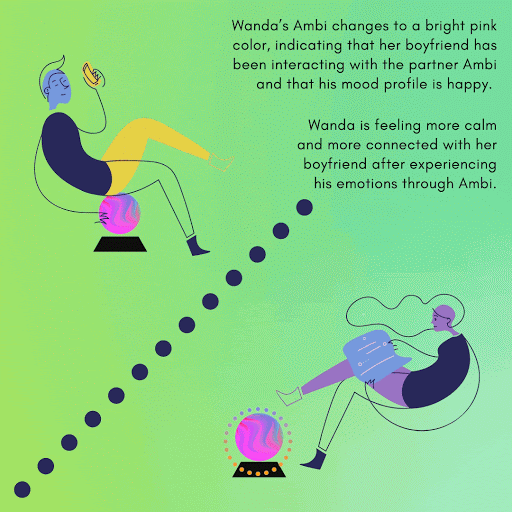User Scenario
Wanda is a 26 year old woman who has recently moved to Boston, MA to start a new job as an accountant at CitiBank. Wanda is far away from her family, friends, and boyfriend who live in Houston, TX and is feeling especially isolated and lonely because of the lack of in-person interactions during the pandemic. Wanda works full-time from her desk in her one-bedroom apartment, and only sees her colleagues and friends over Zoom or Facetime. She is experiencing fatigue from too much screen time and misses the easy communication afforded through in person interactions.
User needs
Wanda wants to decrease feelings of isolation and increase connections with her boyfriend, who she is in a long-distance relationship with. She decides to use Ambi, a tangible user interface that enables Wanda to communicate her mood, reduce stress levels, and feel the presence of others through ambient light display feedback. She also gives a connected partner Ambi to her boyfriend, so the two Ambi devices can communicate mood data with each other.
User interaction
Wanda turns on Ambi, and while in its resting mode, Ambi affects the overall environment of the room by exhibiting light patterns that simulate a breathing presence, to create a calming, meditative atmosphere. When Wanda puts pressure on her Ambi device by squeezing it or touching it, pulse and skin sensors on the system will respond to her interaction by generating an emotion/mood profile for Wanda. The connected partner Ambi owned by Wanda’s boyfriend will represent Wanda’s emotions by changing the resting light patterns to colors corresponding to Wanda’s mood profile. Ambi is a portable device that sits on a base but can be moved freely around the house. Wanda likes to have it in the room when she works at her desk.
User benefits
Wanda receives a few benefits to using Ambi. As a result of using the device, Wanda feels less stressed after repeatedly squeezing the orb. The material allows for tactile affordances similar to a stress ball, squeezing Ambi releases tension and reduces her stress levels. Secondly, Wanda feels a heightened sense of emotional connection with her boyfriend who is the user of the corresponding partner device after being able to communicate their mood to each other. She can get insight into her partner’s emotional state without relying on screen communication and exacerbating her screen fatigue. This somewhat replicates the ease of intuitive communication of mood that usually happens in in-person interactions like nonverbal cues. Ambi allows both Wanda and her boyfriend to work and go about their lives separately but still have a line of communication where they can still feel connected to each other. Lastly, the immersive lighting atmosphere produced by Ambi affects the user’s working environment in a non-intrusive way, and studies have shown that certain colored ambient lights impact the autonomic nervous system in ways that promote relaxation and stress management.







